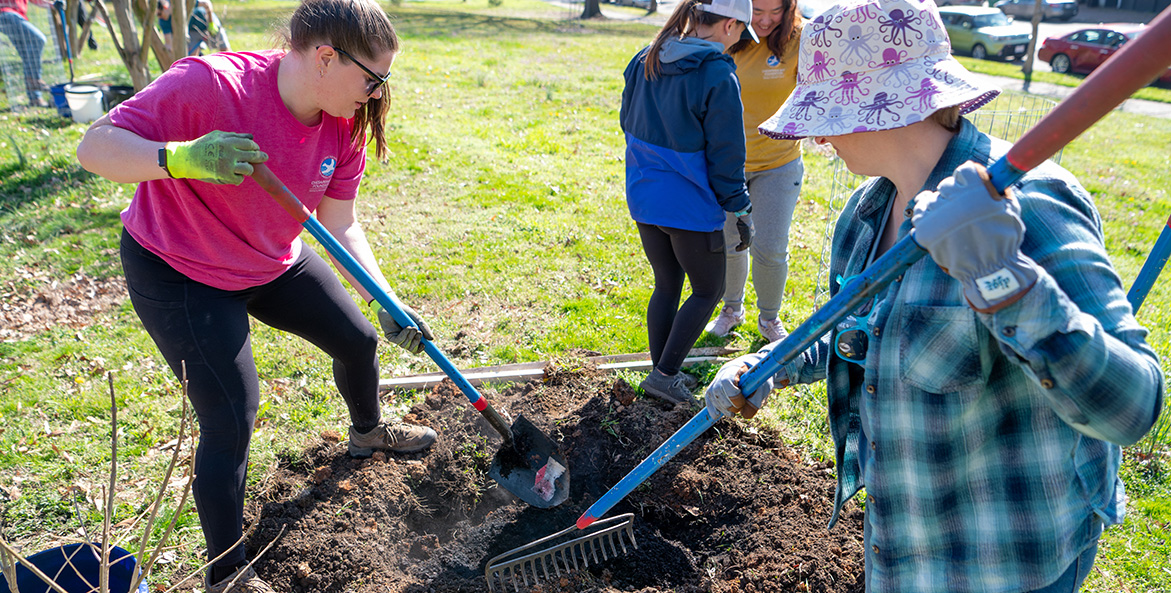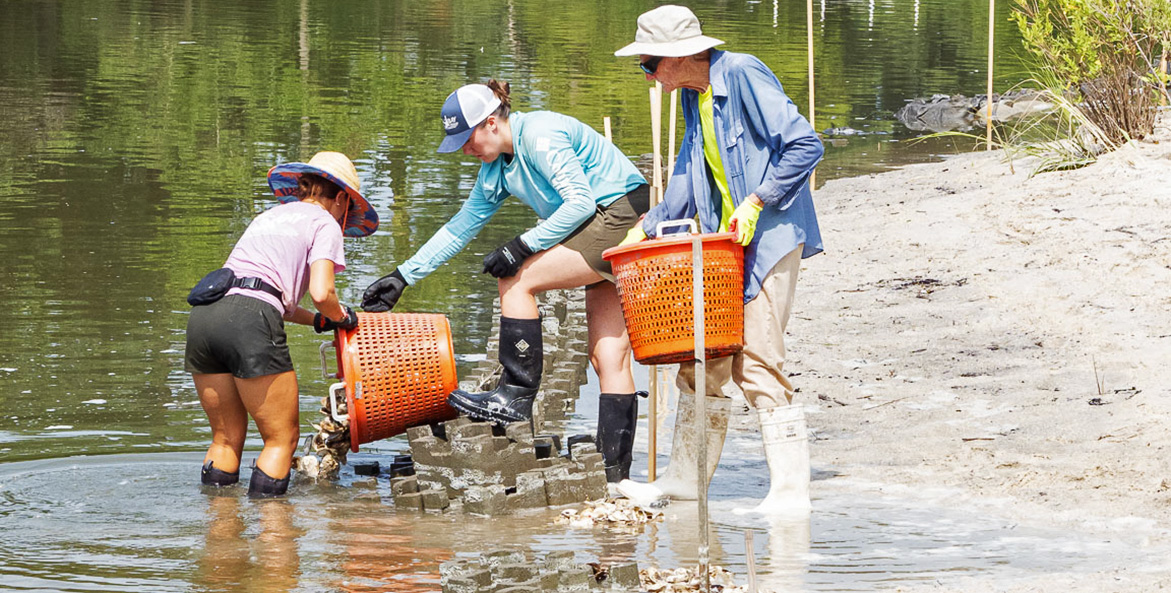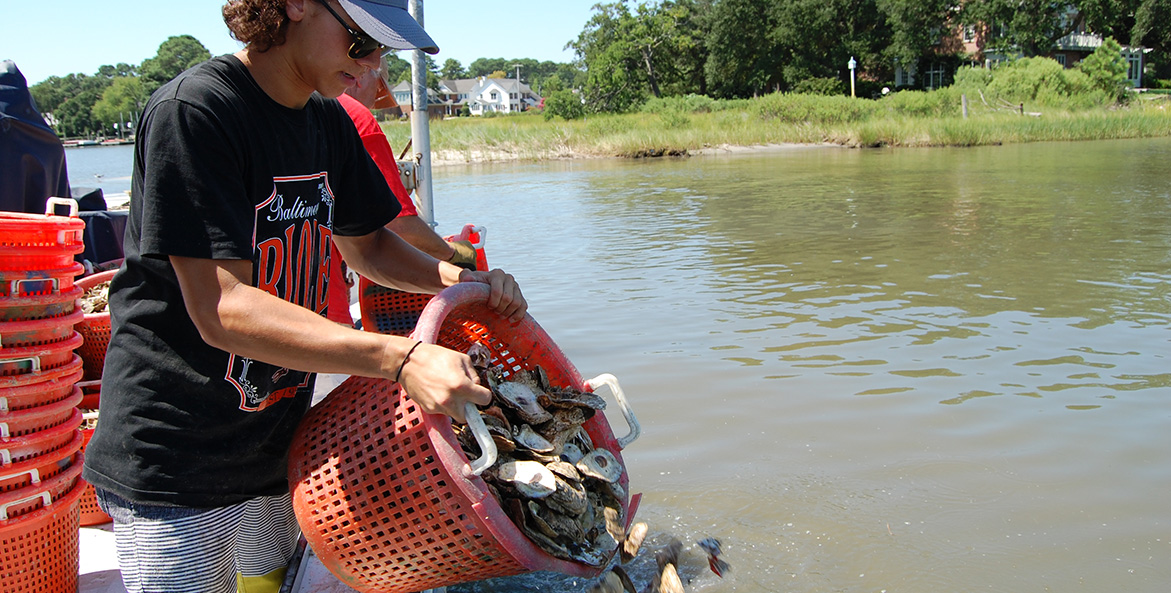In the early months of 1983, Chesapeake Bay restoration seemed poised to end before it truly began.
The previous summer, funding very nearly ran out to complete the federal government’s six-year Chesapeake Bay Study—a $27 million, Congressionally mandated research program to discover the causes of the Bay’s deterioration. And while the Bay states showed interest in working together, there was no plan—or funding—to take the program’s research findings and turn them into a restoration effort.
“The EPA’s (Environmental Protection Agency’s) local office will dissolve once the program is finished this fall,” wrote the editorial board of The Capital newspaper in Annapolis on March 4, 1983. “And there is a real fear that the EPA will also abandon its interest in curing the Bay’s ills.”
But the effort didn’t end. That December, buoyed on “the wings of public support” as The Washington Post called it, 700 attendees witnessed the governors of Maryland, Pennsylvania, and Virginia, the mayor of Washington, D.C., and the chair of the Chesapeake Bay Commission sign the first Bay Agreement with the federal government. The simple pact set the stage for a robust, coordinated restoration partnership unlike any other in the nation or the world.
Just over 40 years later, that partnership is again at a crossroads. The parallels are striking—a looming restoration deadline in 2025; the release of a major scientific report calling for change; an uncertain path forward; and a fear that the will to ‘cure the Bay’s ills’ may dissipate.
If you care about having clean water in your backyard, if you care about being able to boat and recreate, if you care about being able to go walk on a nature trail, if you care about clean air—then you should care about whether or not we have the resources and ability to continue pouring time and effort into restoring the Bay. Because that can all go away if we have the partnership dissolve.
The difference this time is the existence of the partnership itself. Tying together local, state, and federal governments, academic institutions, and public interest groups across all six Bay watershed states and the District of Columbia under a common agenda, it has long been at the cutting edge of restoration.
The question is: Can it once again reinvent itself to do restoration effectively in a vastly changed world?
“All of the pieces are up in the air right now,” says Denice Wardrop, Executive Director of the Chesapeake Research Consortium and a member of CBF’s Board of Trustees. “We have to be careful that the prospect of significant change is not so scary that, instead of doing the hard work of revisioning, people double down and retrench. There are indications, to me, that there is a real risk of that.”
A Vast Restoration Infrastructure
To understand the task ahead, it helps to first understand the partnership and how it functions.
Congress ultimately tasked the EPA’s Chesapeake Bay Program with coordinating and overseeing the multi-state, multi-agency effort to clean up the watershed. However, the partnership reaches far beyond the EPA. Today, it encompasses at least 40 state agencies, 19 federal agencies, 800 local government bodies, 60 non-governmental citizen groups, and 20 academic institutions.
“It’s much larger than just the EPA Bay Program or any federal agency or just the states,” says Keisha Sedlacek, CBF’s Federal Director. The partnership’s job is also much larger than many people realize. Water quality is just one of 10 goals the partnership committed to achieve under the current Chesapeake Bay Watershed Agreement, signed in 2014. The additional nine goals target habitat restoration, sustainable fisheries, the reduction of toxic contaminants, and the expansion of public access and environmental education, among others—all of which are ultimately necessary for a healthy watershed long-term, says Sedlacek.
“Those are key parts of the agreement,” she says. “If we only talk about water quality, we negate half of the partnership.”
All of this is jointly managed through a formal structure headed by the Chesapeake Executive Council, a governing body with nine members: each of the six Bay state governors, the mayor of the District of Columbia, the chair of the Chesapeake Bay Commission—which represents state legislators from Maryland, Pennsylvania, and Virginia—and the EPA Administrator—who represents all of the federal agency partners.
Supporting the Executive Council and carrying out day-to-day operations are several layers of leadership committees, management staff, and teams tasked with achieving each of the Bay Agreement goals, as well as three advisory committees that draw on outside expertise from scientists, local governments, and citizen groups.
One of these is the independent Scientific and Technical Advisory Committee (STAC), which brings together scientists from across the watershed to address specific questions regarding restoration and advise the partnership’s leadership. It continues a long tradition of placing science at the heart of the effort.

The vast partnership that underpins Chesapeake Bay restoration is unique and key to its success, facilitating everything from policy reforms to major tree planting efforts.
Jasmyn Moore/Dementi Studio
The Power of Partnership
Ultimately, this vast infrastructure underpins the entire restoration effort. It makes the Chesapeake Bay cleanup unique among restoration programs across the country and even around the world, says Rich Batiuk.
The argument could be made that everything positive that’s come over the last 40 years has somehow tied back to the partnership. We would not have come as far. If each state were to do this on their own, what incentive do they have to think big, dream big, without having partners who are doing it with them?
Batiuk spent more than 30 years of his career at the EPA’s Chesapeake Bay Program Office, retiring in 2018 from his post as Associate Director for Science, Analysis, and Implementation. He has traveled extensively around the country and the world to advise other watershed restoration efforts in places like the Great Lakes, Florida, China, and New Zealand.
“Very few other efforts have that infrastructure like we have here, and that includes some of the ones that have been around for quite a while,” says Batiuk. “They just don’t have that deep sense of, yes, you’re working together and you’re working off a shared budget to a certain degree, but you also have a shared mission that you’ve all agreed to.”
The sense of shared destiny—and a commitment to shared decision-making—was critical for establishing another unique hallmark of Bay restoration: its legally-backed targets to reduce water pollution, known as the Total Maximum Daily Load (TMDL).
Established in 2010 and incorporated into the Chesapeake Bay Agreement in 2014, the TMDL remains the largest and most complex plan to reduce water pollution in the country. And despite the fact the partnership will not meet the plan’s targets by the 2025 deadline, it has arguably been one of the most successful, driving pollution reductions even as the region’s population boomed, agriculture intensified, and climate change made the job harder.
Getting the TMDL in place was no guarantee, and it would not have been possible without the breadth and depth of the partnership.
“We literally asked six states and the District [of Columbia] to hold hands and jump off a cliff together with the promise of a safe landing,” says Batiuk.
The same is true for other major successes—from the precipitous drop in pollution from wastewater plants, to the expansion of public access points across the watershed, to the resurgence of species like oysters.
“The argument could be made that everything positive that’s come over the last 40 years has somehow tied back to the partnership,” Sedlacek says. “We would not have come as far. If each state were to do this on their own, what incentive do they have to think big, dream big, without having partners who are doing it with them?”
Reinvent, or Retrench?
For all its positives, the partnership still faces a hard truth: It will not meet all of its restoration goals by the 2025 deadline set by the current Chesapeake Bay Agreement, most notably the water-quality goals outlined by the TMDL.
We’re going to need to be working together to reduce the risk of uncertainty and change by trying new approaches, and do them so they can get scaled up quickly.
A major scientific report released last year by STAC made the scale of the water quality task excruciatingly clear. Known as the CESR (pronounced “Ceasar”) report—short for Comprehensive Evaluation of System Response—it made the case that, while efforts to reduce nutrient and sediment pollution made significant progress given the headwinds of population growth, intensifying agriculture, and climate change, current efforts are not enough to meet the goals any time in the near future. Progress is proving much more challenging than expected, and continuing current restoration programs as-is will not be enough to make progress in the future.
Nonetheless, Wardrop, one of the report’s primary authors, calls it one of the most hopeful things she’s ever been part of in her professional career. In addition to outlining key opportunities to amplify current efforts, it also opened space for conversations about how the partnership can do restoration better. However, it will take significant change in programs and policies. The fear is that, instead of confronting the level of change required, partners will want to give up and go home, or simply dig into the status quo.
“There are opportunities out there for innovation and acceleration of efforts, but they require us to acknowledge that we don’t know everything,” she says.
“We’re going to need to be working together to reduce the risk of uncertainty and change by trying new approaches, and do them so they can get scaled up quickly.”
Accountability has to be the backbone of this, and it has to be accountability not just for the states, not just for the federal agencies, but also for the implementers at the regional and local levels.
Some of the suggested changes to restoration programs include: finding ways to address increasingly concentrated pollution from intensifying agriculture and development; better targeting efforts where they are most effective and paying more attention to bolstering habitats as well as water quality to benefit plants and animals. This will also require changes in the way the partnership functions.
For example, tightening the relationship between scientists and the partnership’s decision makers is critical to turn research findings into implementable policies, says Wardrop. That includes a formal way to prioritize research needs to answer the questions most likely to influence management decisions and give policy makers the confidence to embrace change.
Cultivating stronger relationships throughout the partnership is also a big need, says Batiuk. In particular, he sees the need to have much more direct engagement of local and regional partners in the decision-making process at all levels, including the executive level. He also sees the need to build in more accountability.
“Accountability has to be the backbone of this, and it has to be accountability not just for the states, not just for the federal agencies, but also for the implementers at the regional and local levels,” he says.

Some of the suggested changes to restoration programs include a greater emphasis on holistic habitat restoration that benefits both wildlife and communities, much like the living shoreline under construction here.
Sue Mangan
A Decisive Moment
The precursor to any major changes is the Executive Council’s annual meeting in December. While staff and experts within the partnership have been working over the past 18 months to formulate recommendations for what comes next, ultimately, it is the council’s decision how to proceed.
First and foremost, the council needs to officially recommit to working together to reach the goals outlined in the Chesapeake Bay Watershed Agreement, says Sedlacek. This would help reassure partners and the public that the goals will be met. Just as important is a commitment to update the agreement over the next year and make the changes needed to respond to CESR and other important science findings that would make restoration more effective.
“If you care about having clean water in your backyard, if you care about being able to boat and recreate, if you care about being able to go walk on a nature trail, if you care about clean air—then you should care about whether or not we have the resources and ability to continue pouring time and effort into restoring the Bay,” says Sedlacek. “Because that can all go away if we have the partnership dissolve.”
Like it did during the critical moments leading up to the first Bay Agreement in 1983, the outcome could hinge on a demonstration of broad public support urging leaders to take action.
This story originally appeared in the fall edition of Save the Bay magazine. Be sure to check out the full issue.




